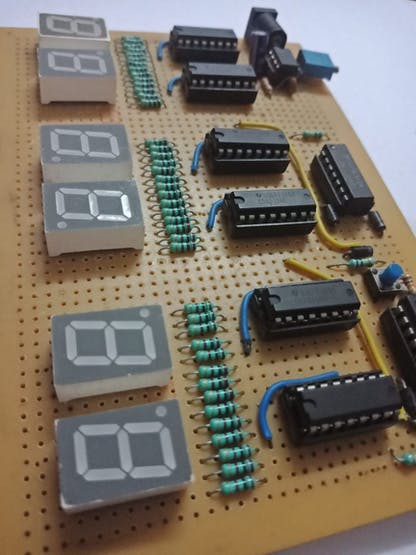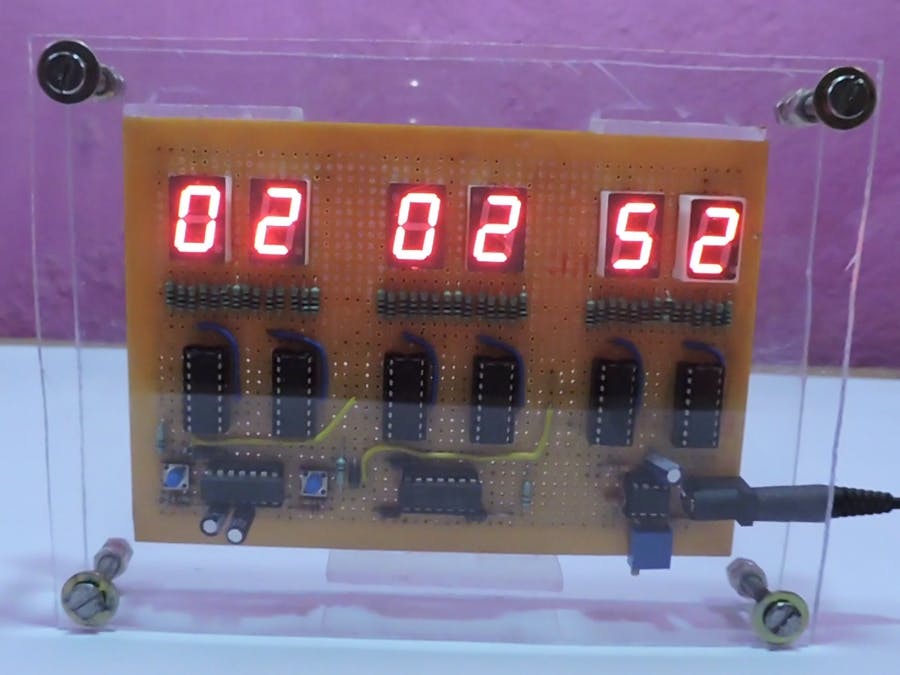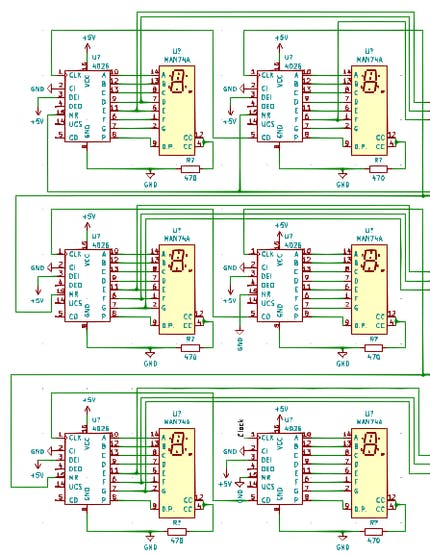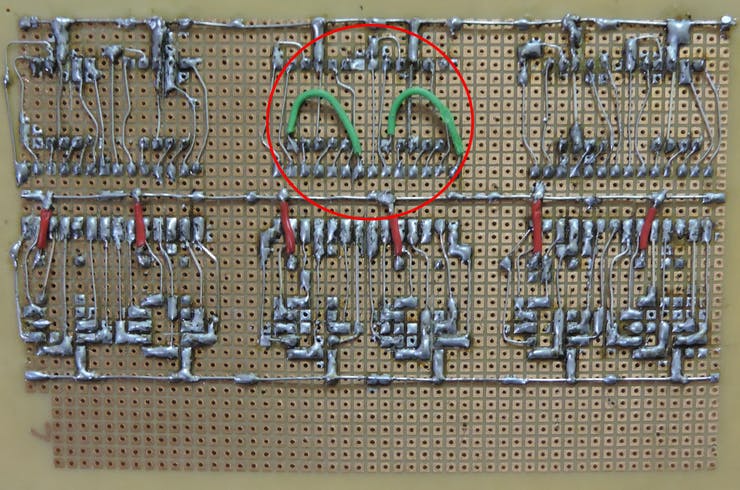

It's pretty easy to build circuits with a microcontroller but we totally forget the tons of work that a microcontroller had to go through to complete a simple task(even for blinking an led). So, how hard would it be to make a digital clock completely from scratch? No coding and no microcontroller and to make it real HARDCORE how about build the circuit in a perf-board without using any printed circuit boards.
This is really a challenging project to do, not because of how the clock logic works but because of how we are going build the circuit with all these components together in a compact perf-board.
This project was inspired by this instructable (author: hp07) back in 2018, which would be insanely hard to build in a perf-board because of the number of connections and the components used. So, I did a bit of digging online to reduce the complexity but still make it fairly basic and difficult to build in a perf-board.
First, we have to understand the answer to a few questions before we can jump into building this digital clock! how are we going to keep track of time and how can we define time itself?
The solution to this problem is quite simple (If you think of yourself as a rebellious teenager and just pretend over a century physicists never scratched there head about it). The way we are going to approach this solution might be counter-intuitive, where first we'll see how we can keep track of time and then later define time.
Consider the clock as a counter which can count numbers up to 0-60 and 0-24 (let's just worry only about 24hr clock for now) whenever this value exceeds it just carry over to the next higher designation [Seconds -> Minutes ->Hours ->Days->Months->Years ].


But we are missing a major point here, When should we increment this counter value? Let's take a look into simple physics definition
"The second is defined by taking the fixed numerical value of the cesium frequency ∆ν, the unperturbed ground-state hyperfine transition frequency of the cesium 133 atom, to be 9 192 631 770 when expressed in the unit Hz, which is equal to s−1. "
If you understood the definition, you should probably take theoretical physic and quit electronics!
Anyway, for simplicity, we'll just assume it's the time taken for a cesium atom to vibrate 9 billion times. Now when you increment the counter every one second or time is taken for a cesium atom to vibrate 9 billion times you got yourself a clock-sort-of-thing! To this, if we could just add logic in such a way that seconds carry over to minutes and minutes carry over to hours when they reach 60 (and hours reset on 24). This will give us a fully functional clock that we are expecting.
Now, let's see how we can bring theory into reality, with some magic of pure electronics!


Less of final thoughts and more of an apology, even though on the front the clock might be good looking to few it's a total blunder on the other side. In my defense I will tell a few things, this project was done almost 3 years ago and this was the most complicated project that I worked back then so I was learning many things on the go. Secondly, I was very poor at soldering and mechanical work back then. If I redo this right now, I can improve a lot.